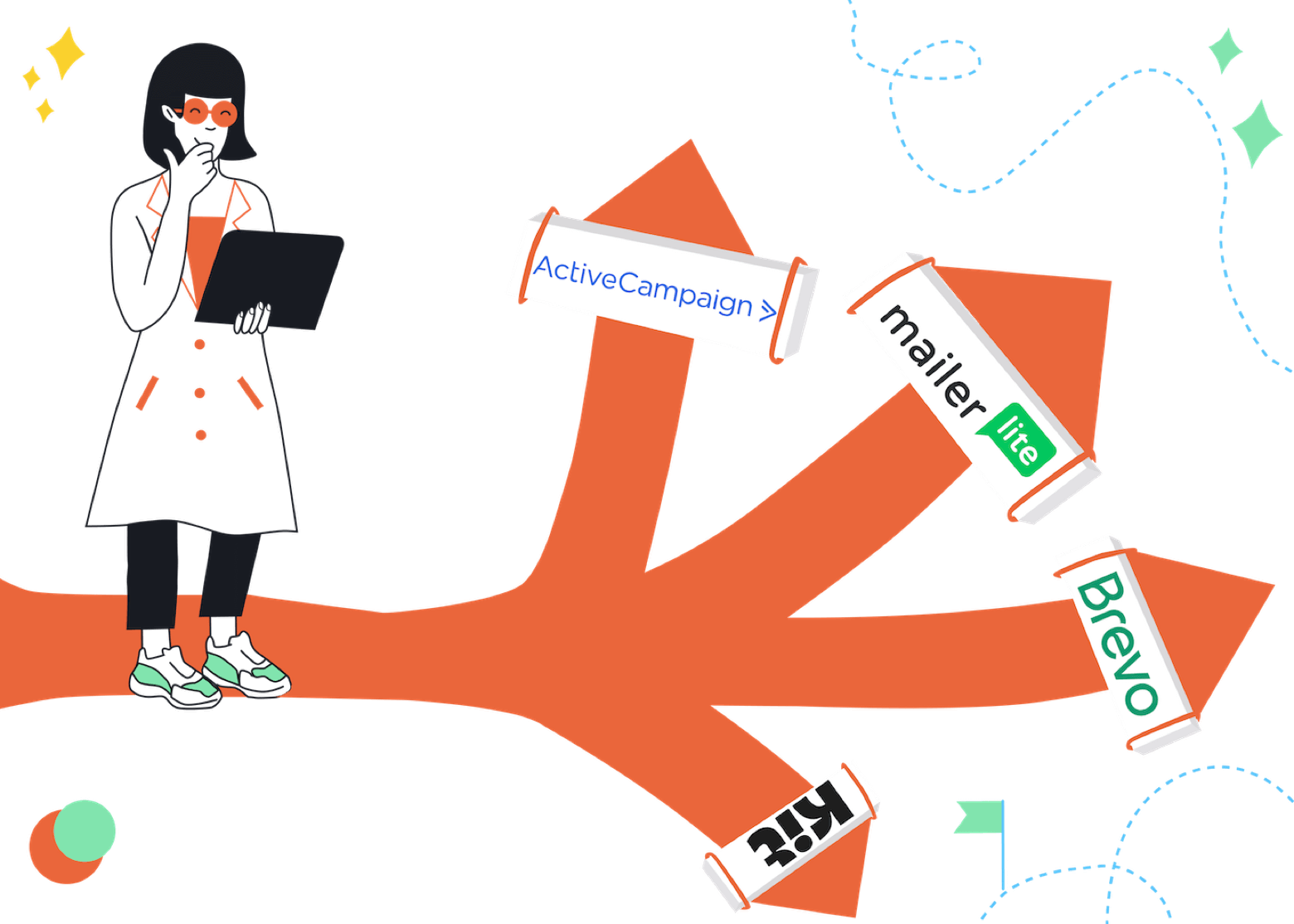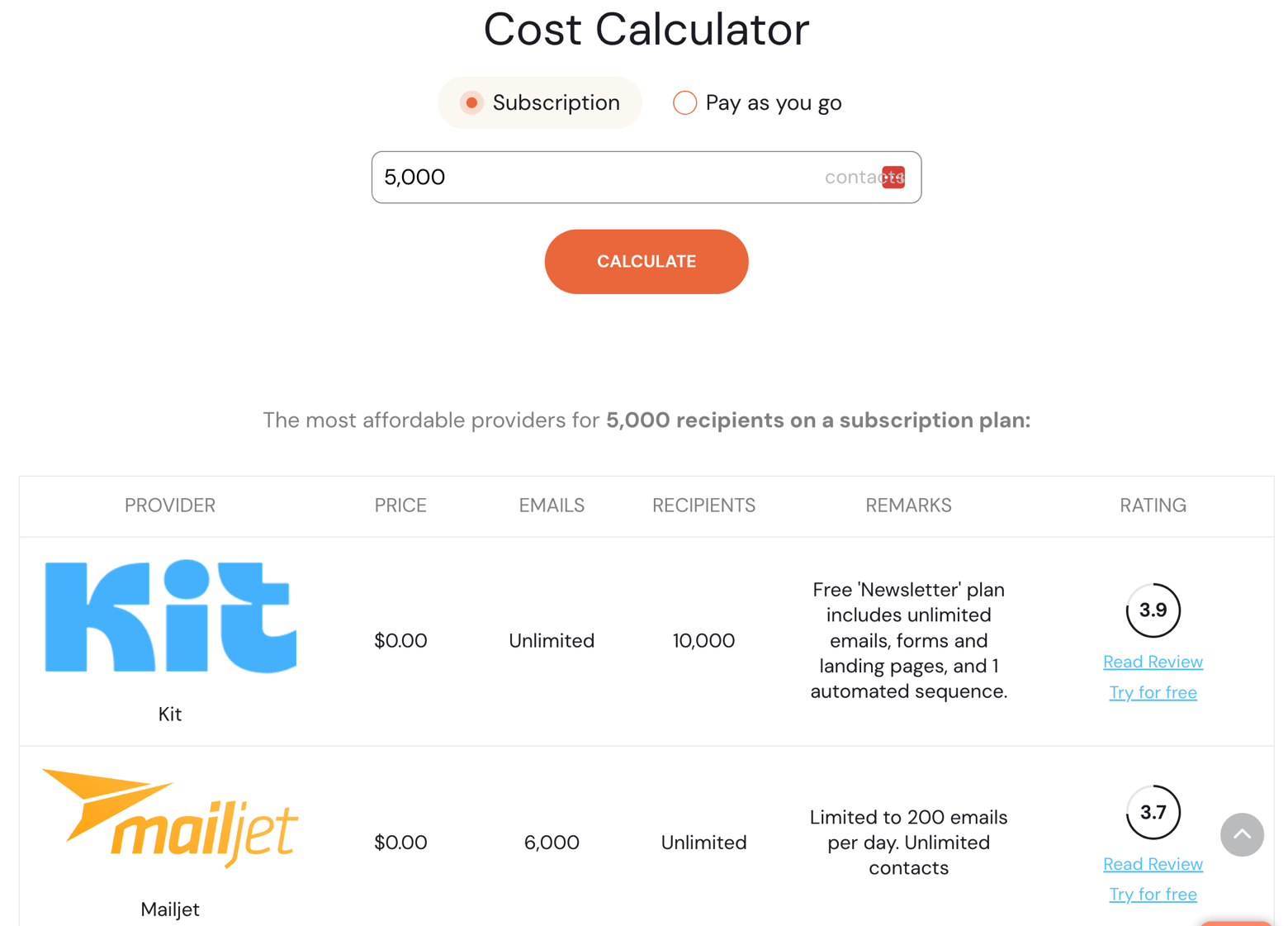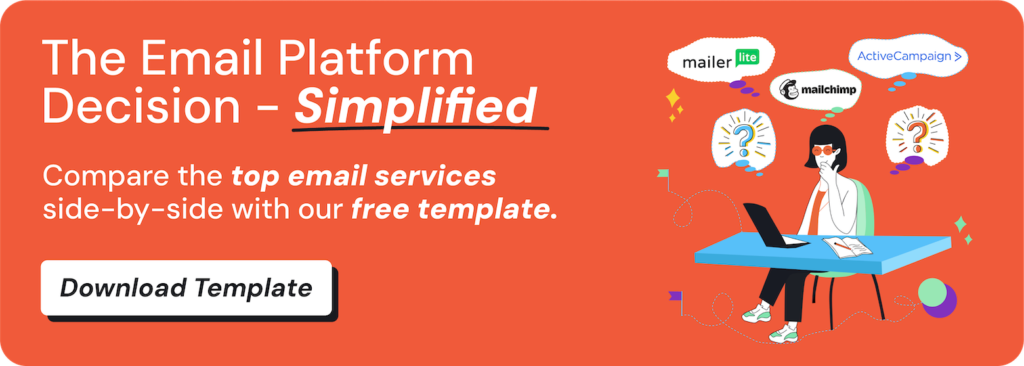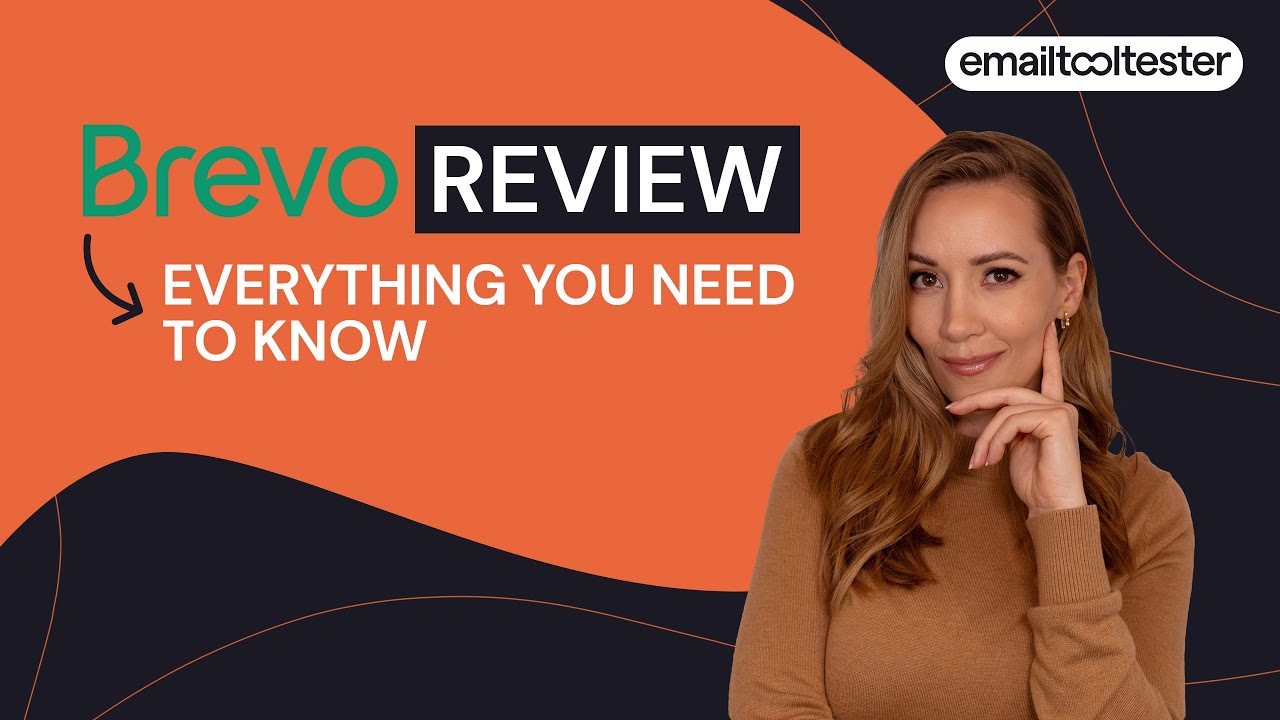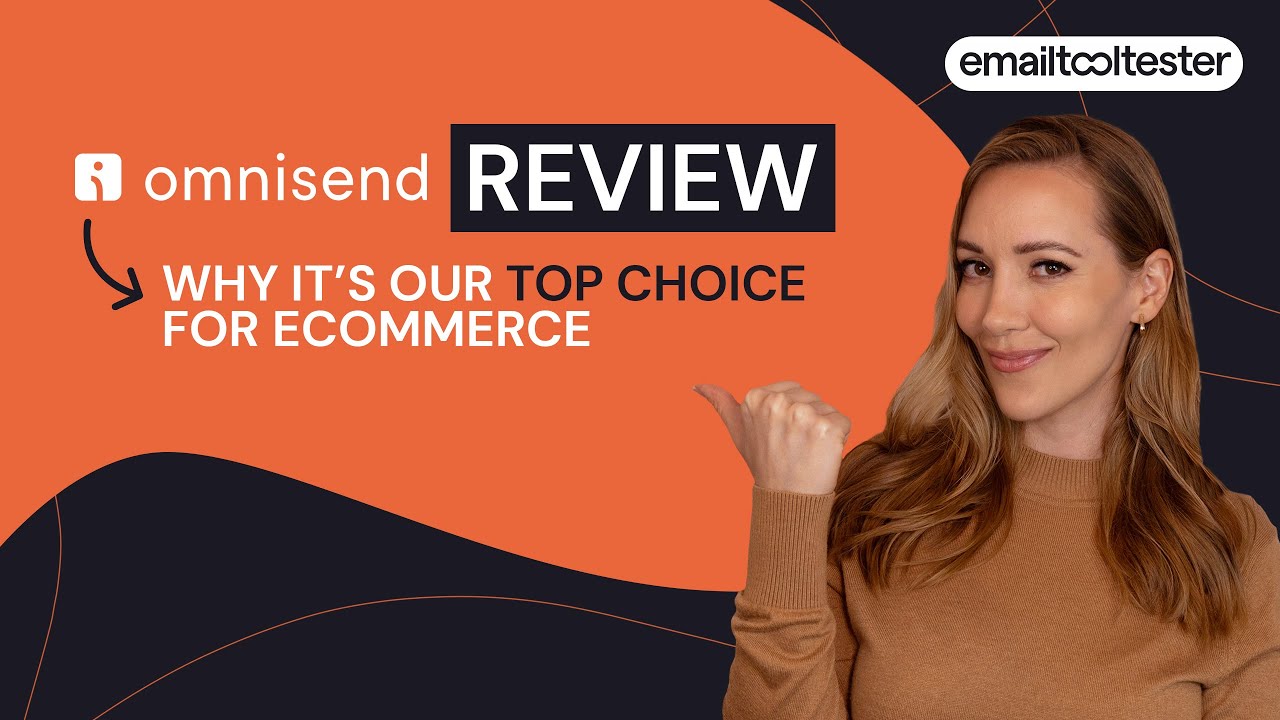EmailTooltester is supported by readers like yourself. We may earn a commission when you purchase through our links. Of course, this won't increase the cost for you.
When I first started looking for an email marketing platform for my business, I was completely lost. Some tools were too basic, others were ridiculously expensive, and every pricing page seemed designed to confuse me.
Sound familiar?
If you’re struggling with how to choose the best email service provider (ESP) for your business, you’re not alone. The truth is, the right platform depends on what you actually need (and your budget), not just what providers try to sell you.
In this guide, I’ll break down what really matters, from cost-effective pricing models to must-have features, so you can find the best email marketing software without wasting money or ending up with the wrong fit.
Guide Summary – My 2 Cents (The Video)
In the next video, I’ll share how I picked an email marketing platform for a little side project of mine. It’s a low-budget gig, so I had to watch out for costs — and all those sneaky extra fees. I also found a few tricks ESPs use to keep you spending more than you planned.
Understanding ESP Pricing Models
As a small business owner, I had one main concern when I was looking for an email marketing platform: avoiding unexpected fees. I didn’t want to overpay for features I wouldn’t use or get stuck with a pricing model that punished me as my email list grew. I needed that money to grow other areas of my business.
After researching various email marketing software, I quickly saw that pricing can be tricky, with some models being much better suited for small businesses and solopreneurs than others.
Here’s what I learned.
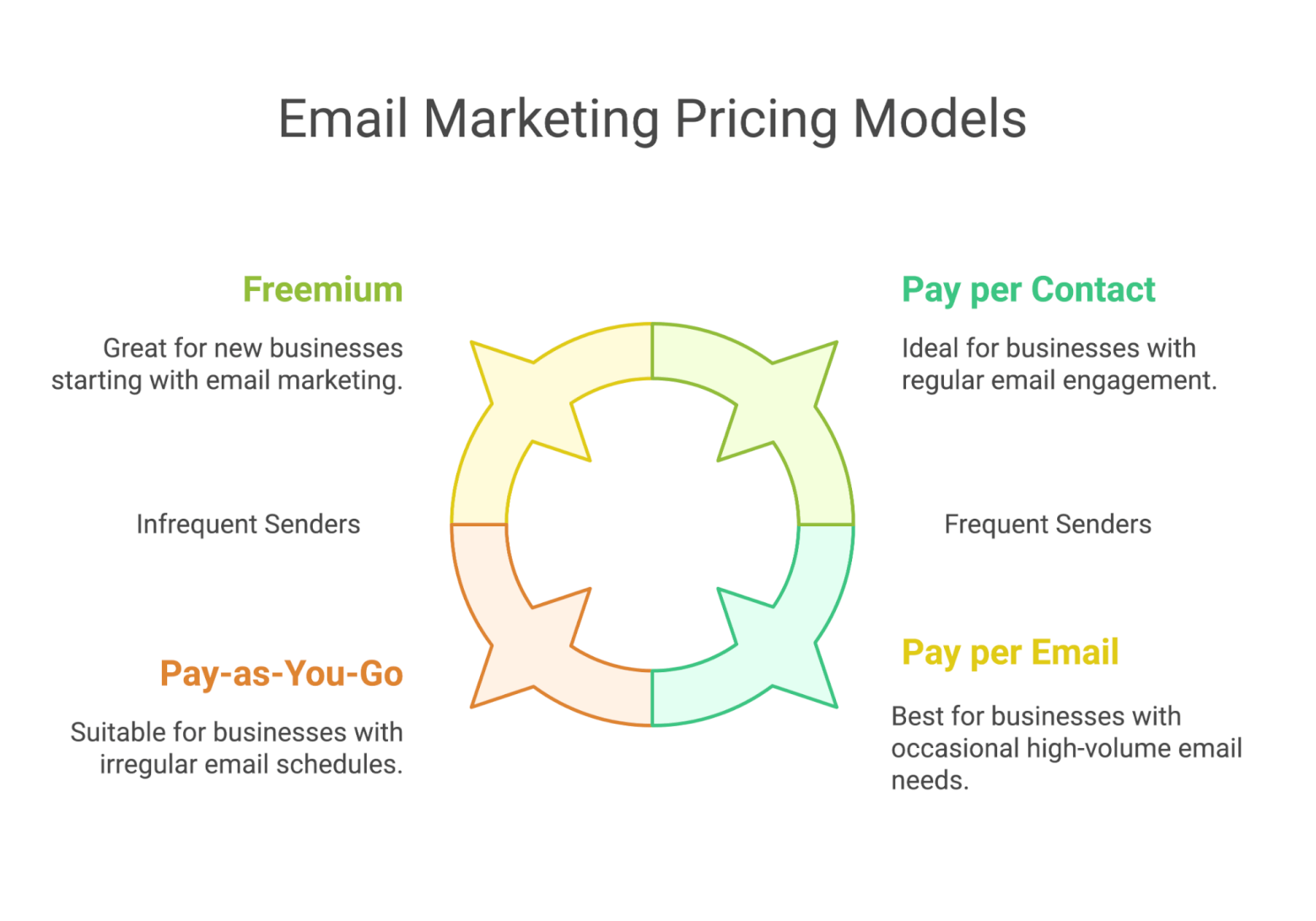
Diagram of the different email marketing pricing models
Freemium: Great for Starting, but with Limits
Many ESPs offer free plans, which seem like a great deal at first. They usually come with a subscriber limit, a cap on emails sent per month, and their own logo in your emails. While this can work if you're just starting out, I found that once my list would grow, I ‘d have to upgrade, and that’s where costs jumped quickly.
A great free plan doesn’t always mean a great paid plan. Take Mailchimp, for example. We used it at EmailTooltester, and while its free plan is generous, the paid options are pricey for what they offer. As your list grows, you could end up locked into an expensive tool, since switching platforms isn’t always easy.
- Best for: New businesses testing email marketing before committing to a paid plan.
- Watch out for: Limited automation, fewer design options, and required branding in emails.
EmailTooltester's email marketing Cost Calculator
Check out our cost calculator to see how much different email marketing platforms cost based on your subscriber count, or to find the best pay-as-you-go plans that fit your needs.
Pay per Contact: Great for Frequent Senders
With this model, you pay based on the number of subscribers, not the number of emails sent. If you send emails regularly, this can be cost-effective. However, what email marketing platforms don’t always tell you is that some platforms charge you for inactive or unsubscribed contacts, which means you could be paying for people who never even receive your emails. (Mailchimp is an ESP that’s notorious for this.)
Be aware that some providers may also limit the number of emails you can send each month, even if you’re billed based on subscribers. For example, with ActiveCampaign, you are allowed to send up to 10 to 15 times your subscriber limit per month.
- Best for: Businesses that email their subscribers often and want predictable pricing.
- Watch out for: ESPs that bill for unsubscribed or bounced contacts, unless you manually remove them.
Pay per Email: Budget-Friendly for Low Senders
Instead of charging per subscriber, some ESPs charge based on the number of emails sent. At first, this might seem like a fairer model, especially if your list includes many inactive subscribers. However, I quickly realized that while this pricing structure works well for low-volume senders, it can become expensive if you need to scale up during promotions, seasonal campaigns or you need to send transactional emails.
- Best for: Businesses that send occasional newsletters or promotional emails rather than frequent campaigns.
- Watch out for: Costs can spike quickly if you send more emails than expected in a given month.
Pay-as-You-Go: For infrequent senders
Some ESPs offer credit-based pricing, allowing you to buy email credits upfront and use them as needed. Initially, this seemed like a cost-effective option for my business since I wasn’t locked into a monthly fee. But, I soon noticed that credit-based plans often charge a higher per-email rate than standard monthly plans, making them less cost-effective over time.
Another downside of pay-as-you-go plans is that they often come with feature limitations. In many cases, if you want access to advanced automation tools, you’ll need to upgrade to a monthly paid plan.
- Best for: Seasonal businesses or those with irregular sending schedules.
- Watch out for: Higher per-email costs compared to standard plans and expiration dates on unused credits.
Watch Out for Unfair Billing Practices
Some email marketing providers seem affordable at first, but hidden fees and limitations can quickly add up. Here are some common pricing traps to avoid:
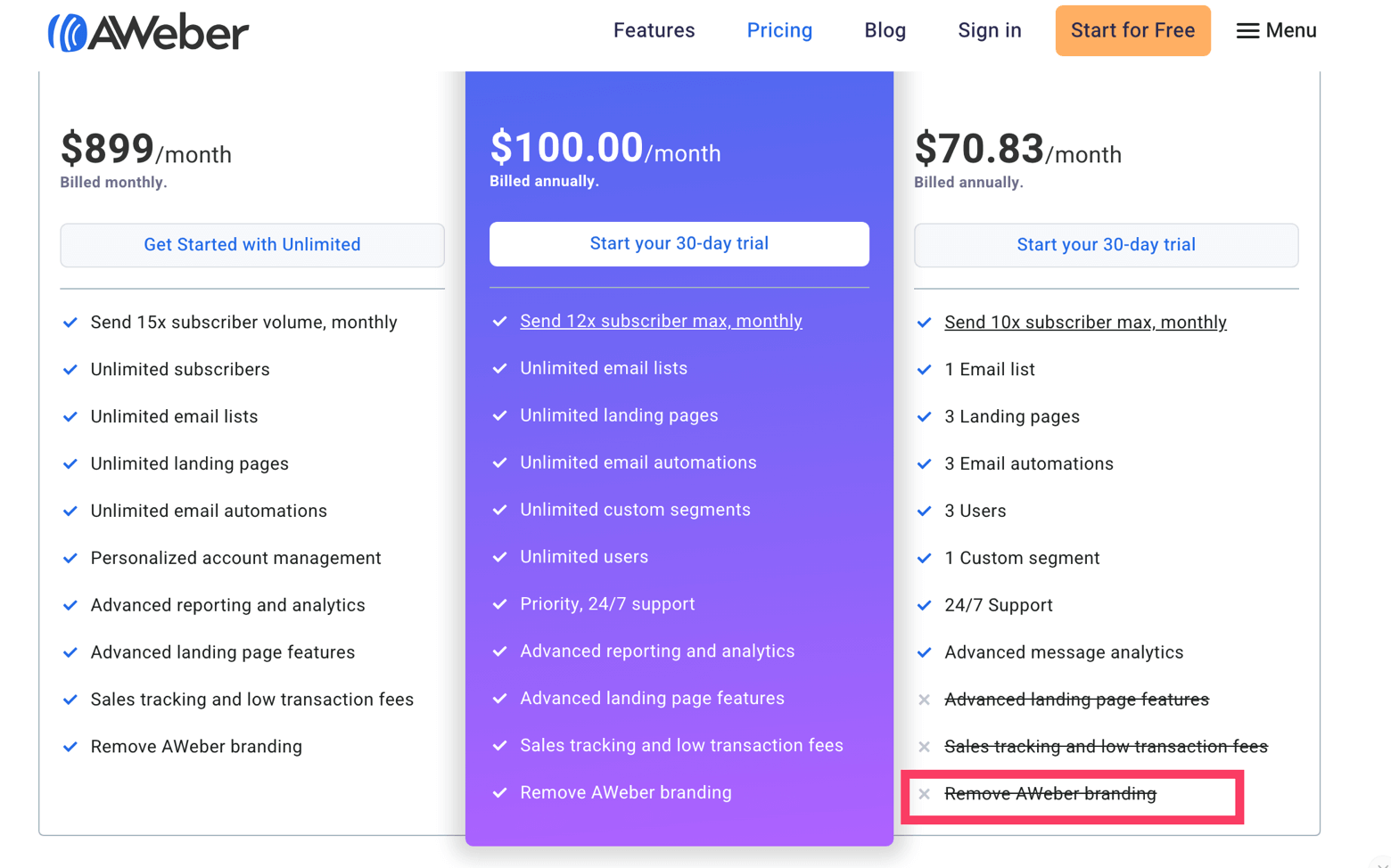
With AWeber you need a higher-level plan to remove their branding
- Paying for inactive contacts: Some ESPs (e.g., Mailchimp) charge for unsubscribed or bounced contacts unless you remove them manually. This is quite unfair, as why would you pay for a contact that doesn’t want to receive your emails, or doesn’t even exist?
- Automatic overage charges: If you exceed your plan’s limits, some platforms (e.g., Mailchimp, the usual suspect) automatically upgrade you or charge extra without warning.
- Paying to remove branding: Free or low-tier plans from email marketing providers., like AWeber, include a “Sent with XXX” badge, which makes emails look unprofessional. Removing it requires an upgrade or an extra yearly payment.
- Essential features locked: Some starter plans look cheap (e.g., GetResponse, ActiveCampaign), but with limit automation, reporting, or integrations, forcing you to most likely having to upgrade.
- Extra fees for support: Several providers charge extra for priority support or faster response times, even if you're on a paid plan. For example, ActiveCampaign, Klaviyo, and GetResponse limit priority support to higher-tier users.
- Extra costs for adding team members: At times, platforms (e.g., Brevo) charge additional fees per extra user, making collaboration more expensive.
Before committing to an ESP, take a close look at its pricing structure and feature limitations. What seems affordable upfront can become costly as your business grows.
Must-Have Features: What Do You Really Need?
Choosing the right email marketing platform isn’t just about pricing. It’s equally important to find the features that match your business needs. Some email marketing tools come packed with automation, while others focus on ease of use or multi-channel marketing. Here’s what to look for based on your business type.
If You’re a Small Business
You probably don’t need complex automation or expensive enterprise tools. Instead, you’ll want an ESP that’s affordable, easy to use, and helps grow your audience.
For example, Brevo is one of the easiest email marketing tools I’ve ever used, and it won’t cost you an arm and a leg. In fact, it’s the one I ended up choosing for my own business, I chose it for my own business because its combination of beginner-friendly design and affordability won me over.
Check out our video analysis below!
What to look for:
- Drag-and-drop email builder for quick and professional-looking emails.
- Pre-designed templates to save time.
- Affordable pricing with a free plan or budget-friendly tiers.
- Basic automation (welcome emails, simple sequences).
Best ESPs: MailerLite, Brevo, Moosend
If You're a Content Creator
If you're a content creator, blogger, or newsletter publisher, your focus is likely on monetization and audience growth rather than traditional email marketing. That means you’ll need a platform that offers:
- Landing page builders to create optimized sign-up pages.
- Monetization options, such as paid newsletters, membership features, sponsorships, sell products and services online, and ads.
- Growth tools, like recommendation networks and referral programs to expand your audience.
A couple of platforms stand out in this space:
Beehiiv: Built specifically for newsletter creators, Beehiiv offers paid subscriptions, ad integrations, and cross-promotional tools to help grow and monetize your newsletter.
Kit: Designed for creators looking to diversify their revenue, Kit includes built-in recommendations and sponsorship options.
For a deeper dive into monetizing your newsletter, check out our guide:
How to Monetize a Newsletter.
If You Need Advanced Automation
Businesses that rely on customer journeys, segmentation, and AI-driven workflows need a platform with strong automation capabilities to build complex workflows that match their needs.
When it comes to automations, our favorite pick at EmailTooltester is ActiveCampaign. As you’ll see in our video below, it’s truly state-of-the-art.
What to look for:
- Visual automation builder to create complex workflows.
- Website tracking to trigger emails based on customer behavior.
- Lead scoring and tagging to personalize campaigns.
- A/B testing to optimize email performance.
Best ESPs: ActiveCampaign, HubSpot, GetResponse
If You Run an E-commerce Store
E-commerce businesses need deep integrations with platforms like Shopify, WooCommerce, and Magento to sync customer data, track purchases, and send targeted campaigns. Your ecommerce email marketing platform should work seamlessly with your store, allowing you to automate and personalize messages based on customer behavior.
Check out our video below to see how a tool like Omnisend can supercharge your online store’s email marketing efforts.
What to look for:
- Abandoned cart emails to recover lost sales.
- Product recommendation emails based on customer behavior.
- Revenue tracking to measure campaign effectiveness.
- Coupon code automation to drive repeat purchases.
Best ESPs: Omnisend, Klaviyo, Drip
If You Do Multi-Channel Marketing
If your business reaches customers via email, SMS, and ads, you’ll need a platform with multi-channel capabilities to maximize engagement. A well-rounded ESP allows you to combine email campaigns, SMS notifications, and targeted ads, ensuring your audience receives the right message through the right channel at the right time.
What to look for:
- SMS marketing for direct customer engagement.
- Social media ad integration (Facebook, Google, Instagram).
- Omnichannel automation to coordinate emails, texts, and ads.
- Segmentation to personalize messages across platforms.
Best ESPs: Brevo, Omnisend, ActiveCampaign
No matter your business type, the right ESP should align with your budget, goals, and marketing strategy. Before choosing, take advantage of free trials to test different platforms and ensure they provide the features you actually need.
Comparison of Top ESPs
With so many email marketing platforms available, choosing the right one depends on your business needs. Below is a quick comparison of MailerLite, ActiveCampaign, Omnisend, and Brevo (Sendinblue) to help you decide which ESP could best suits your goals.
| ESP | Best For | Key Features | Pricing |
|---|---|---|---|
|
MailerLite |
Small businesses, creators | Easy-to-use, affordable, automation & landing pages | Free plan, paid plans from $10 |
| ActiveCampaign | Advanced automation, CRM integration | Powerful automations, website tracking & sales CRM | Starts at $19 * |
| Omnisend | E-commerce businesses | Shopify/WooCommerce integrations, abandoned cart emails & SMS marketing | Free plan, paid plans from $16 |
| Brevo | Multi-channel marketing, budget-conscious users | Email + SMS, live chat, transactional emails & multi-language support | Free plan, paid plans from $9 |
* ActiveCampaign’s Starter plan limits automations, forms, and conditional formatting. An upgrade will likely be needed as your needs grow.
Each platform has its strengths, so the best choice depends on whether you prioritize ease of use, automation, e-commerce tools, or multi-channel marketing. Testing a free plan or trial can help you determine which ESP works best for your business.
Cost-Saving Tips
Email marketing is one of the most cost-effective ways to grow your business, but costs can add up quickly if you’re not careful. Between tiered pricing models, extra fees, and unnecessary add-ons, it’s easy to overpay for features you don’t need. Here are some smart ways to keep your costs low while maximizing value.
Pay Annually for Discounts
Most ESPs offer annual billing discounts, allowing you to save 10-30% compared to paying month-to-month. While an annual plan requires a larger upfront payment, it can significantly reduce long-term costs, especially if you know you’ll be using the platform for at least a year.
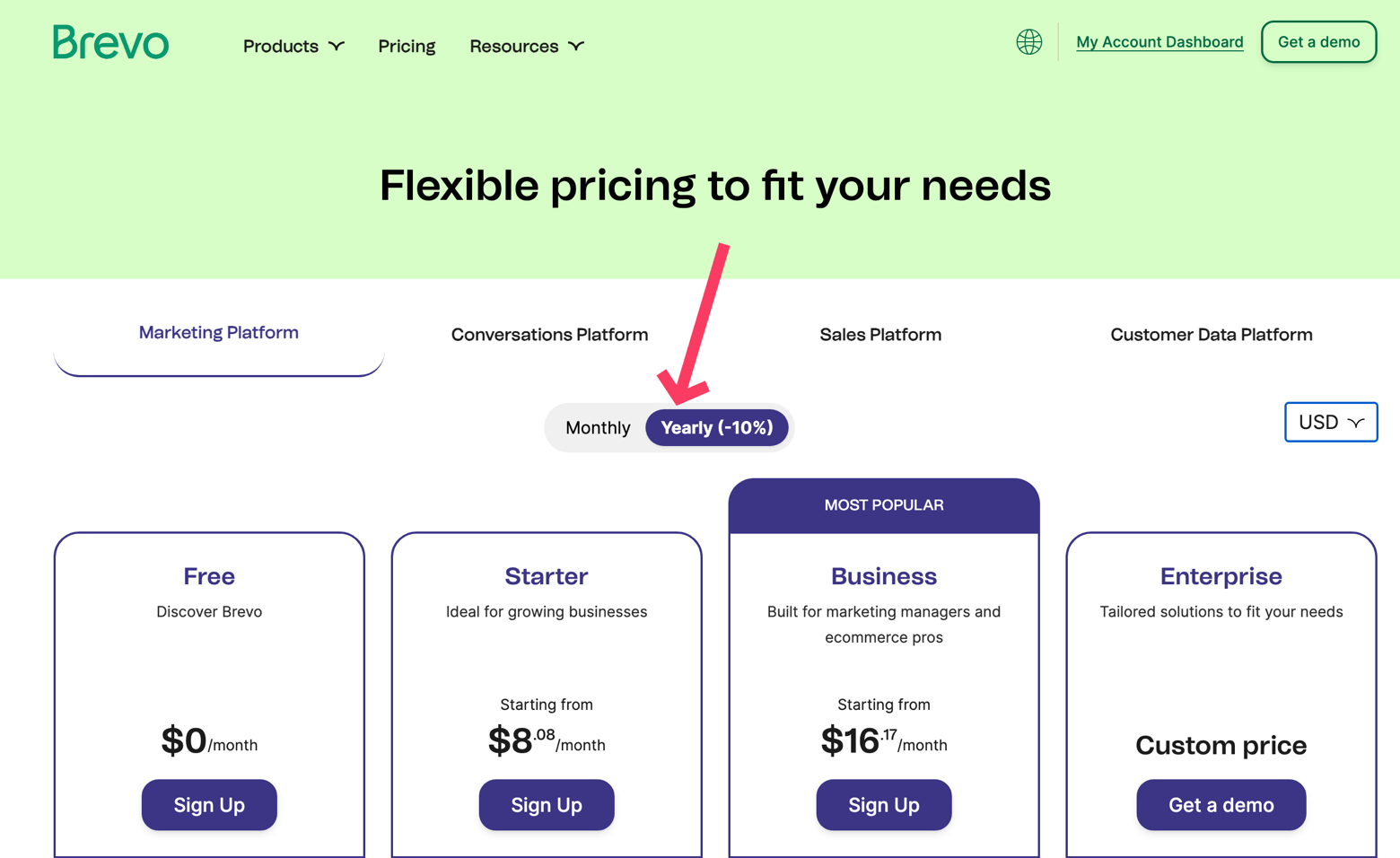
Brevo's yearly discount
Example: ActiveCampaign, GetResponse, and Brevo all offer discounted annual plans, with savings ranging from 10% to 30%.
Tip: Before committing, check if the ESP offers a money-back guarantee or trial period so you can test it risk-free.
Ask for Hidden Discounts
Not all discounts are advertised. Many ESPs offer special deals if you ask for them via live chat or email support. Newsletter tools may provide seasonal promotions, loyalty discounts, or extra perks to retain customers. A number also offer discounts if you’re a nonprofit organization.
Example: Some users have reported getting Brevo’s premium plan at a lower price by simply reaching out to customer support.
Tip: Before subscribing, ask support if there are any ongoing promotions or exclusive discounts. This can sometimes lead to 10-20% savings on your plan.
Avoid Unnecessary Features & “Recommended” Plans
Many ESPs promote recommended plans that include extra features you may never use. These higher-tier plans often bundle in automation, CRM, or advanced analytics, which might not be necessary for small businesses or beginners.
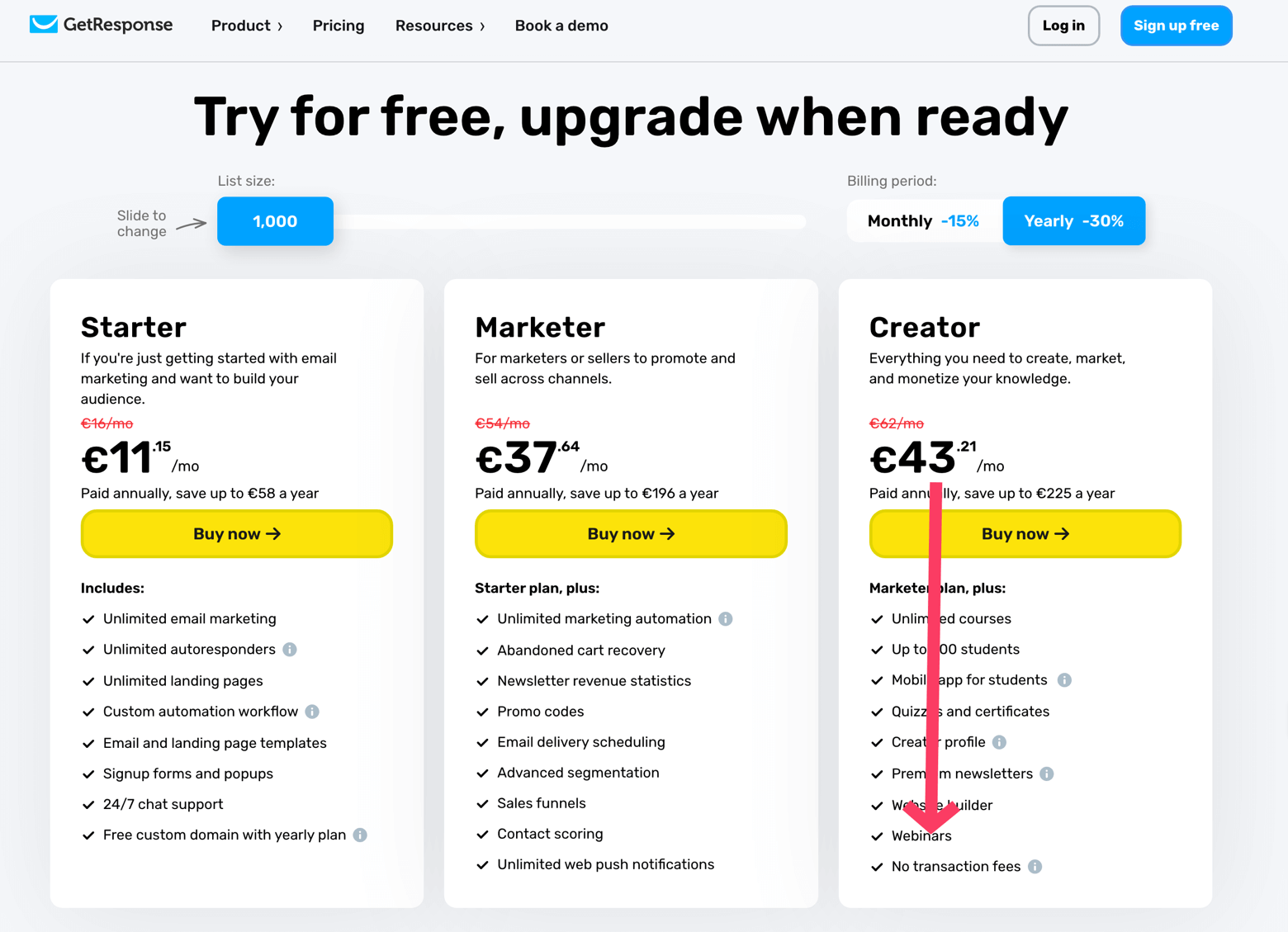
Example of GetResponse's top tiers and extra features
Example: GetResponse’s “Creator” plan includes webinar hosting, which many users don’t need, yet it significantly increases the monthly cost.
Tip: Start with the lowest plan that meets your needs and upgrade only if necessary. Many ESPs let you scale up easily without long-term commitments.
Clean Your Email List Regularly
Most email marketing platforms charge based on your number of contacts, meaning you could be paying for inactive or unsubscribed users. Regularly removing bounced emails, inactive subscribers, and duplicate contacts can save you money and improve deliverability.
Example: Mailchimp and AWeber count unsubscribed and inactive contacts toward your billing, which can inflate costs unnecessarily.
Tip: Use automation to flag inactive subscribers and send re-engagement campaigns before removing them.
Keep Your Email Marketing Costs Under Control
Keeping email marketing costs low doesn’t mean sacrificing quality. By making smart billing choices, avoiding unnecessary features, and maintaining a clean contact list, you can maximize ROI while keeping costs manageable. Always review pricing details carefully, compare plans, and take advantage of available discounts to get the best value from your ESP.
Finding the Right ESP Without Overpaying
Choosing the best email marketing platform comes down to picking the one that truly fits your business without unnecessary costs or hidden fees.
- If you own a small business or create content online, focus on ease of use and affordability. MailerLite and Brevo are good options to explore.
- If you need advanced automation, look for platforms with powerful workflows and segmentation like ActiveCampaign.
- E-commerce businesses should prioritize deep integrations with Shopify or WooCommerce. Omnisend or Klaviyo are top choices here.
- Finally, multi-channel marketers will need email, SMS, and ad automation in one place. ActiveCampaign and Brevo are excellent options for this.
No matter what your needs are, testing a free plan or trial can help you avoid buyer’s remorse. And if you want to make sure you’re not overspending, keep an eye on hidden fees, clean your email list regularly, and always check for unadvertised discounts before committing to a plan.
Still unsure which ESP is right for you? Book a consultation call with us, and we’ll help you navigate all these options. You can also check out our ESP Comparison Template and EmailTooltester Cost Calculator to make an informed decision.
We keep our content up to date
02 Mar 2025 - Personal experience added
Our Methodology
This article has been written and researched following our EmailTooltester methodology.
Our Methodology